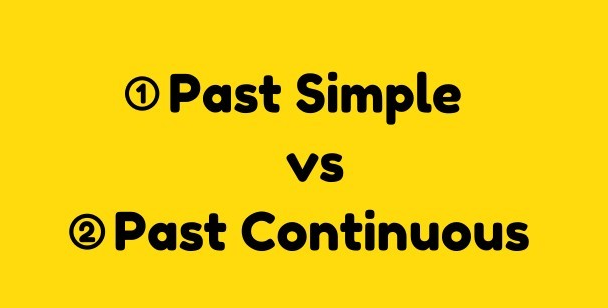Welcome back to our series on taming English tenses! If you’ve ever felt like time traveling in English is more confusing than figuring out how time machines work in movies, you’re not alone. In this, the second blog in this series, we’re diving into the Past Simple and the Past Progressive (also called Past Continuous). Both are key to talking about the past, but they have distinct roles. Let’s explore how they work, their differences, and how to avoid common mistakes.
Past Simple: The Straight-Talking Storyteller
The Past Simple is your go-to tense for events that are done, finished, and neatly wrapped up like a sandwich in a lunchbox. It’s the “no drama, just facts” tense of the past.
How to Form the Past Simple
- For regular verbs: Add -ed to the base verb:
- “walk” → “walked”
- “play” → “played”
- For irregular verbs: Use their special past forms (sorry, you just have to memorize these):
- “go” → “went”
- “eat” → “ate”
When to Use It
- Completed Actions in the Past:
- “I visited Paris last summer.”
- “She finished her homework yesterday.”
- Actions in Sequence:
- “I woke up, brushed my teeth, and went to work.”
Common Mistakes
- Using the wrong verb form:
- Wrong: “He go to the park yesterday.”
- Right: “He went to the park yesterday.”
- Forgetting irregular forms:
- Wrong: “I seed the movie.”
- Right: “I saw the movie.”
Past Progressive: The Scene Setter
The Past Progressive is like a movie director—it sets the scene for what was happening at a specific moment in the past. It’s great for adding drama, describing background actions, or showing interruptions.
How to Form the Past Progressive
- Use was/were + verb-ing:
- “I was walking.”
- “They were playing.”
When to Use It
- Actions in Progress at a Specific Time:
- “At 6 PM yesterday, I was cooking dinner.”
- “She was studying when I called her.”
- Background Actions:
- “The birds were singing, and the sun was shining.”
- Interrupted Actions:
- “I was reading when the phone rang.”
Common Mistakes
- Mixing Up Completed Actions and Ongoing Actions:
- Wrong: “I was finished my homework.”
- Right: “I finished my homework.”
- Overusing the Past Progressive:
- Wrong: “She was always coming late to class.”
- Right: “She always came late to class.”
(Past Progressive is not used for habits—use Past Simple for that.)
Past Simple vs. Past Progressive: A Quick Comparison
| Situation | Past Simple | Past Progressive |
|---|---|---|
| Single, completed actions | “I watched the movie last night.” | — |
| Actions in progress at a time | — | “I was watching the movie at 8 PM.” |
| Interruption | “The phone rang.” | “I was cooking when the phone rang.” |
| Background description | — | “The kids were playing outside.” |
Pitfall Alert: Mixing Up Tenses in Stories
When telling stories, learners often mix these tenses incorrectly:
- Wrong: “I was cooking dinner and the phone rings.”
- Right: “I was cooking dinner when the phone rang.”
Remember: Past Progressive is for the ongoing action, and Past Simple is for the interrupting action!
Exercise: Test Your Knowledge
Choose the correct tense (Past Simple or Past Progressive) for the sentences below:
- While I _______ (walk) to school, I _______ (see) a rainbow.
- She _______ (study) when her friend _______ (call).
- We _______ (go) to the beach last weekend.
- At 7 PM, they _______ (watch) their favorite TV show.
- The children _______ (play) outside when it _______ (start) to rain.
- He _______ (read) a book last night.
- I _______ (fall) asleep while I _______ (listen) to music.
- The teacher _______ (ask) a question while I _______ (daydream).
- They _______ (not/finish) their homework before dinner.
- The lights _______ (go) out while we _______ (watch) a movie.
Answers
- was walking, saw
- was studying, called
- went
- were watching
- were playing, started
- read
- fell, was listening
- asked, was daydreaming
- didn’t finish
- went, were watching
Mastering these tenses is like assembling a puzzle—once you know which piece fits where, the picture becomes clear. Keep practicing, and soon you’ll be telling stories like a pro, blending Past Simple and Past Progressive like a true English time traveler! Happy learning! 🌟
If you have enjoyed reading this blog, please ‘like’ it and share it with your friends and colleagues, and if you know anyone who might be interested in my online one-to-one lessons, please do ask them to contact me to discuss how I can help them to excel in English.


Recent Comments